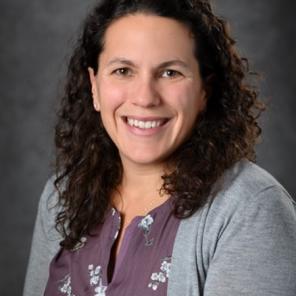
Caroline R. Szczepanski is an Assistant Professor at Michigan State University focusing on bio-inspired and biomimetic materials design. She earned her B.S. in Chemical Engineering from Lafayette College in 2009 and her M.S./Ph.D. in Chemical Engineering from the University of Colorado in 2014. After completing her PhD, she spent two years as a post-doctoral researcher at the Université Côte d’Azur (Nice, France) and two years as a Research Assistant Professor at Northwestern University. Caroline’s research team takes inspiration from natural materials with unique and intriguing properties (self-cleaning behavior, mechanical performance, etc.) and leverages polymer science and polymer engineering to recapitulate and expand upon intricate and complex natural designs. Caroline demonstrates a deep commitment to public outreach and education through local community events (e.g., hands-on workshops), where she educates attendees on the value of bio-inspired design in technical and engineering challenges.
Please briefly describe your background and research interests.
I am a chemical engineer by training, and my PhD research focused on strategies to tailor photopolymerized polymer networks. Building upon this foundation of polymer engineering, my independent program develops biomimetic materials and interfaces. This includes designing novel methacrylate and methacrylamide monomers for dental adhesives, designing micro- and nanostructured interfaces for controlled wettability and adhesion, and utilizing bio-sourced materials (cellulose based compounds) for adhesive and nanocomposites.
How did you first learn about the AADOCR Mind the Future Program, and what motivated you to apply?
I learned about the program from a program manager at the NIH – who encouraged me to apply. When I was considering applying and researching into the program two things struck me and made me excited to apply. The first was seeing the list of previous cohorts – there were a number of former mentors/mentees in my research field (Dental Materials) that I look up to! I was eager to have the opportunity to engage regularly with a variety of successful dental researchers. I was also struck by the curriculum and the breadth of topics covered. What has been the most valuable benefit of AADOCR membership to you?
I have found access to the annual meetings (AADOCR, mainly) to be the most valuable. Beyond the technical sessions, I have taken advantage of these events to network with program managers, meet other early-career faculty and expand my network!
Are you going to next year’s IADR/AADOCR General Session in New Orleans? If so, which parts are you most looking forward to?
Yes, I am attending the general session. I’m looking forward to connecting and networking. I could not attend the AADOCR meeting in March 2023, so I am eager to get back to the meeting – it’s been too long!
What is the best way for other members to become more involved in AADOCR and get the most out of the membership?
I honestly find just following different professional societies on twitter and social media to be an easy way to get further engaged with fellow researchers! I often find out about new initiatives, activities, webinars, etc. through these platforms. Additionally, I think reminding yourself that AADOCR, like many academic societies, is eager and welcoming to new members. Attending new technical symposia, networking sessions, or webinars for the first time is welcomed and often how you forge new professional connections.



